It seems the most difficult aspect of testing the power of human intention is controlling the intention of the scientists conducting the experiments. Some skeptics have scathingly dismissed research done on the power of human thoughts to affect water, but others are intrigued and eager to see what continued research will discover.
The implications are considerable; the human body is, after all, largely composed of water. Here’s a look at four studies on the subject, as well as some insights found in traditional Chinese culture.
Dr. Masaru Emoto’s Study of Ice Crystals Labeled ‘Love’ and ‘Hate’
From the documentary “What the Bleep Do We Know?”
The most famous experiments done on the power of the human mind to physically impact water were led by Dr. Masaru Emoto, head of the Hado Institute (IHM Corporation) in Tokyo, Japan, in the 1990s.
He exposed water samples to various emotional stimuli—music, words in several languages representing both positive and negative emotions, et cetera. He found that when the water samples were frozen, those that had been exposed to positive human intentions formed beautiful crystals, while those exposed to negative human intentions formed distorted and ugly crystals.
Containers of rice were subjected to the same stimuli and left for 30 days, after which time the levels of mold and decay were compared. Again, the rice exposed to good thoughts remained unspoilt much longer and the other two groups (one exposed to negative thoughts, the other ignored) became black with mould. One of the lessons drawn from the experiment was that neglect and indifference can be as damaging as overt abuse.
Some have criticized his studies as not having sufficient controls or being difficult to replicate.
Physicist Dr. Li Chunbing commented in an interview with the Pure Insight website in 2002: “Although I don’t have an insider’s view of the experiments, I think the mind activities of the research team may influence the results of each experiment. Since water is found to be sensitive to thought, it must also be sensitive to the thought of the researchers. I believe that the researchers would need to keep a clear mind to avoid shaping the results to their likings.”
Attempts to replicate experiment results thus become complicated in studies of human intention.
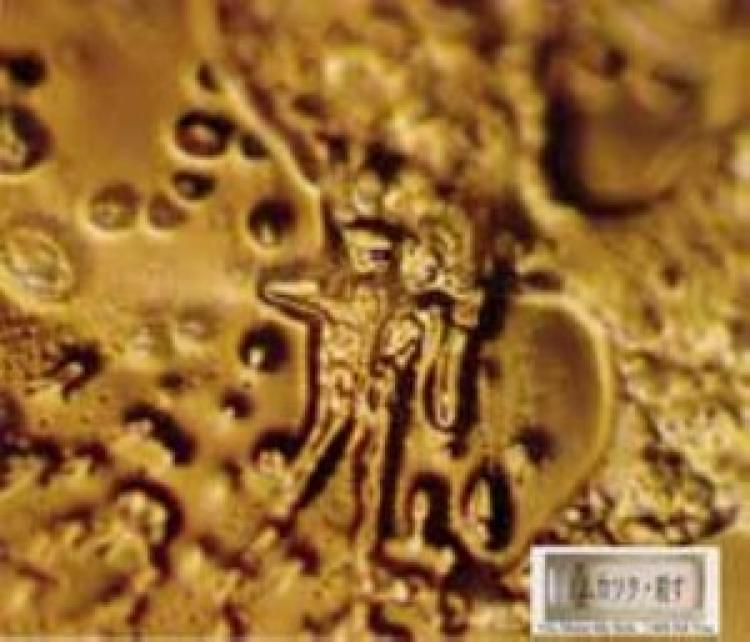
A note with the words ‘You are really nauseating and disgusting. I’ll kill you!' were put on the container of the water that formed this crystal. (Courtesy of Dr. Masuru Emoto)
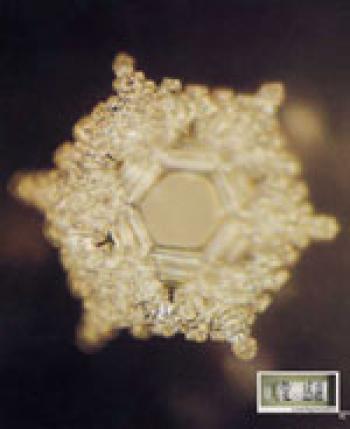
A note with the words ‘love’ and ’thank you' were put on the container of the water that formed this crystal. (Courtesy of Dr. Masuru Emoto)
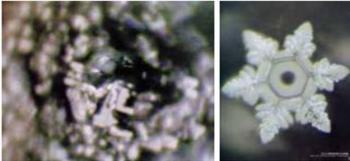
Tap water formed the crystal on the left. After 500 people sent kind thoughts to a bottle of tap water, the crystal on the right was formed. (Courtesy of Dr. Masaru Emoto)
Dean Radin Works to Replicate Emoto’s Results
Dean Radin, Ph.D, worked with Emoto to replicate Emoto’s earlier studies. They published their research in the Journal of Scientific Exploration in 2008 in an article titled “Effects of Distant Intention on Water Crystal Formation: A Triple-Blind Replication.”
Radin is chief scientist at the Institute of Noetic Sciences (IONS); he has held appointments at Princeton University and several other educational institutions in the past.
Here’s a point-form look at their study:
-1,900 people in Austria and Germany focused their good intentions on bottles of water in California. The room in which the bottles were kept was electromagnetically shielded.
-Elements of surprise were added to the experiment by some researchers to control for the intentions of the researchers handling the bottles. For example, researchers in California didn’t know there were control bottles in close proximity to the test bottles. They only knew about the control bottles that were kept at a further distance.
-The beauty of the resultant crystals was assessed by more than 2,500 independent judges, who were unaware of the treatment conditions.
-The judges were asked to differentiate between “beautiful” and “interesting” when characterizing the crystals.
-The water used was randomly selected.
-Measures said to be missing in previous experiments were introduced to this one; they include:
-Controls in close proximity to the test bottles to eliminate environmental differences.
-Petri dishes placed in random positions in the freezer to average out any slight temperature differences
within the freezer.
-Triple-blind controls to control for biases among photographers, judges, and data analysts.
-The results showed, “a modest difference in favor of” the hypothesis that intention can physically impact water.
-The researchers expressed hopes to develop further controls for the intentions of researchers.
Dr. William Tiller Says Human Intention Can Change Water pH
Stanford University Professor Emeritus William A. Tiller said on his website that he and his research team “have repeatedly been able to change the acid/alkaline balance (pH) in a vessel of water either up or down, without adding chemicals to the water, merely by creating an intention to do so.”
He wrote: “We have had others replicate these water pH results at multiple locations around the world. Such results are consistently reproducible!”
ALSO SEE: Stanford Scientist: Vast, Powerful Realm Between Particles Influenced by Human Consciousness
Jane Simmons Tests Water of Good Intention on Growing Wheat
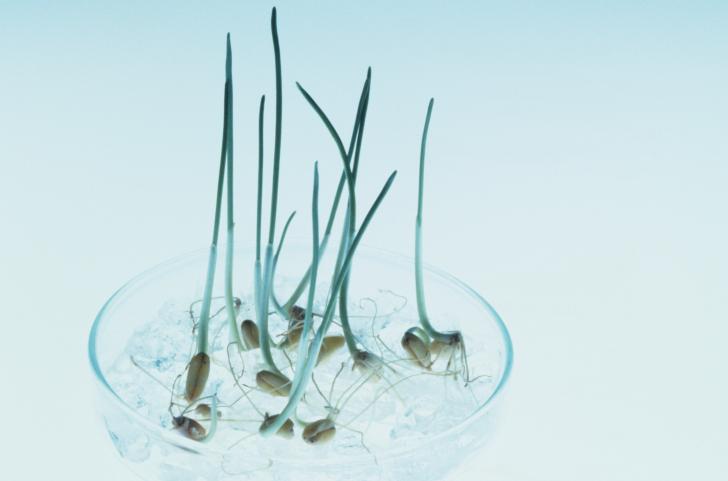
Wheat seedlings growing in Petri dishes. (Thinkstock)
In her theology Ph.D. dissertation submitted to the Faculty of Holos University Graduate Seminary, Jane Simmons investigated the effect a certain heart-cultivation practice had on water.
-Her test subjects were eight Heart-Generated Coherence (HGC) practitioners using the HeartMath technique.
ALSO SEE: How the Heart Is Like a ‘Little Brain’: Which Is Really in Control?
-She placed some of the water samples in close proximity to the practitioners while they practiced without them being aware of it. Another batch of water was presented directly to the practitioners and they were told to focus positive thoughts on it. The control batch of water was kept at a distance from the practitioners and kept as much as possible away from the influence of any intention.
-She used the water on wheat seeds to see if the seeds would grow differently depending on which batch of water was used.
-She did not find a significant difference within the 16-week growth period of the experiment. She did find, however, that the plants in the control group lagged slightly behind the two groups of plants that had been near the practitioners. Over time, wrote Simmons, more significant results may have been observed.
-Though her study did not prove the hypothesis that human intention impacts water, she said further experiments should be done and she gave some insight into how to better control future experiments. Factors that may have affected her results include:
-The control plants may have received slightly less sunlight in the greenhouse than the test groups.
-The current mental state and concentration of the practitioners and of herself as she conducted the experiment may have affected the results. In answering survey questions, some of the practitioners expressed uncertainty in their belief that the HeartMath technique could impact the water. Some said their current overall life situations involved mid- to high-level stress.
ALSO SEE: Your Houseplants Can Think, Talk, Read Your Mind: New Research Adds Evidence
Traditional Chinese View
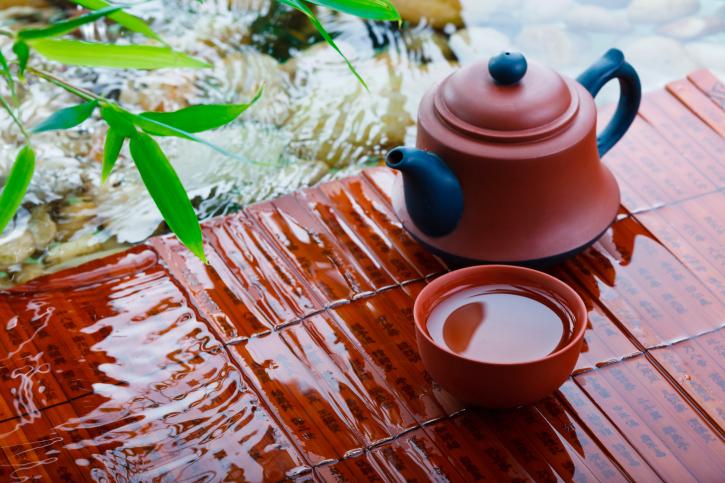
(Thinkstock)
Physicist Dr. Cheng Luojia told Pure Insight: "In Chinese tradition, people had a meticulous understanding of water. For example, in creating medicine one must choose water carefully. To make Aijiao (a Chinese traditional medicine), water from the Ai Well in Ai Village in Shandong Province must be used.
“Water for boiling tea was also carefully chosen. Some tea must be made with specific spring water, some must be made with dew from lotus leaves, some must be prepared with snow from plum blossoms, and some must even be prepared with the water from a certain segment of a certain river.
“If we always keep kind thoughts, we will purify our own body, and thus become beautiful and healthy. If we always keep kind thoughts, we will also purify the environment and people around us. Our kind thoughts can improve everything in this world. It is mind-blowing to see this philosophy clearly in the water crystal experiments [of Dr. Emoto]. The most direct way to purify the world is to keep kind thoughts. It would have a tremendous impact on the world if the public could see that point.”
A Chinese proverb says, “Water is a mirror of the heart.”





